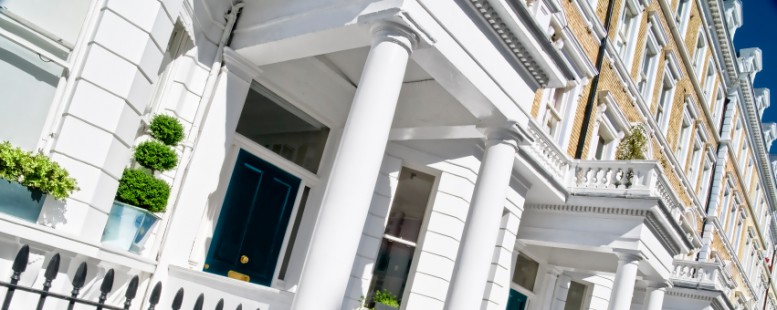Our Opinion: 2017
UK property grows 2.1% over last year

House prices are continuing to flatten out, as tax hikes designed to cool the market continue to bite and, in and near London, where valuations were over-heated.
According to Nationwide’s latest survey, prices fell by 0.1% in July, and growth over the last year fell back slightly to 2.1%. But the national average disguises plenty of regional variation. London saw the weakest house-price growth since 2012, but with prices still up by 1.2% over the year. Meanwhile, the number of new buyers making enquiries in London has fallen, according to the Royal Institution of Chartered Surveyors, suggesting that a fresh slowdown could be under way.
This perhaps shouldn’t come as a surprise. Prices in London are roughly 55% above their 2007 peaks, whereas prices in other parts of the UK – notably in the north, Yorkshire and Humberside, and the northwest, are still below 2007 levels. However, while London prices might now be gently declining, it’s hardly rapid enough to make London affordable for the average buyer. In a sign that property in the capital remains out of reach for many, the number of people abandoning London for other parts of the UK hit a five-year high last year.
So, is the rest of the UK likely to play catch-up with London, or are London’s wobbles likely to spread elsewhere? Prices in the East Midlands and East Anglia have risen the most, with average prices rising at an annual rate of 5% and 4.4% respectively.
One factor supporting prices is the ease of borrowing money to buy property. On that front, mortgage lenders have increased credit availability over recent months, as they compete to gain market share. However, a few factors might offset this – firstly, the Bank of England is paying close attention to lending standards and is unlikely to “sanction any meaningful loosening in credit conditions in the foreseeable future. Secondly, demand for buy- to-let property is likely to be weaker as landlords continue to lose their tax advantages. Capital Economics believe that house prices are still 15% overvalued, given the current level of earnings and lending criteria.
Those looking at property for an investment, rather than to live in, should consider commercial property. Share prices in the property sector crashed by more than 20% in mid-2016 as soon as the news of the Brexit vote came through.
In the year following, panic has been replaced by caution. Share prices have recovered, but not to pre-vote levels, and they mostly stand well below the peaks reached in late 2015. Economic uncertainty means that demand from new tenants is subdued and few new developments have been announced. Yet the market has performed much better than many expected. Property returns have fallen in the last year, but have still been positive.
Confidence in the long-term outlook has been demonstrated by a series of high-profile transactions. In March, the “Cheesegrater” building in the City of London was sold for £1.15bn while in July, records were broken when Chinese food giant Lee Kum Kee paid £1.3bn for Land Securities’ “Walkie Talkie” building.
Lots of investors are taking advantage of the weakness of sterling to buy UK assets, according to Fund Manaer Marcus Phayre-Mudge. “They are looking well past Brexit, which is seen as a short-term domestic problem.”
UK property companies have strong balance-sheets and current uncertainty provides a great long-term buying opportunity across the sector.
2nd September 2017
